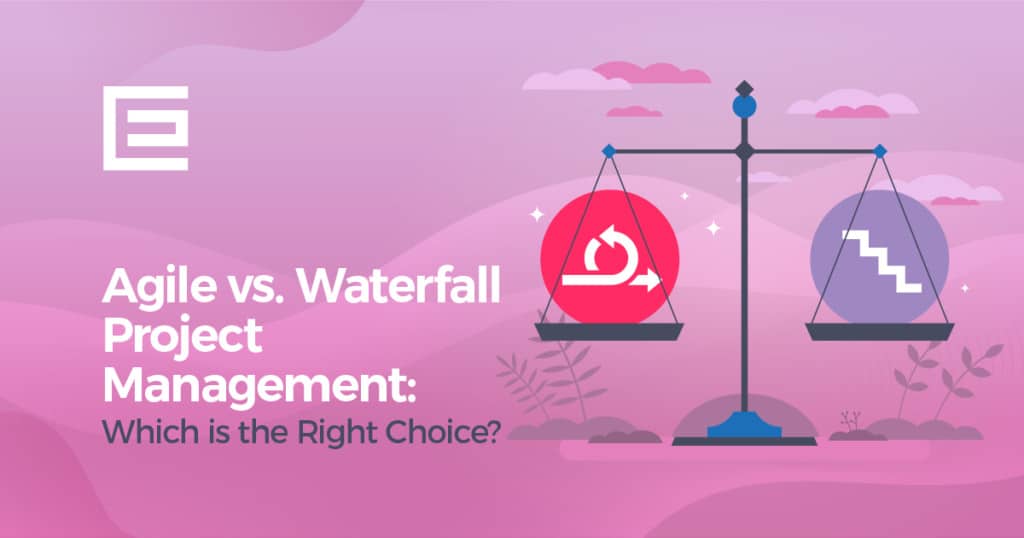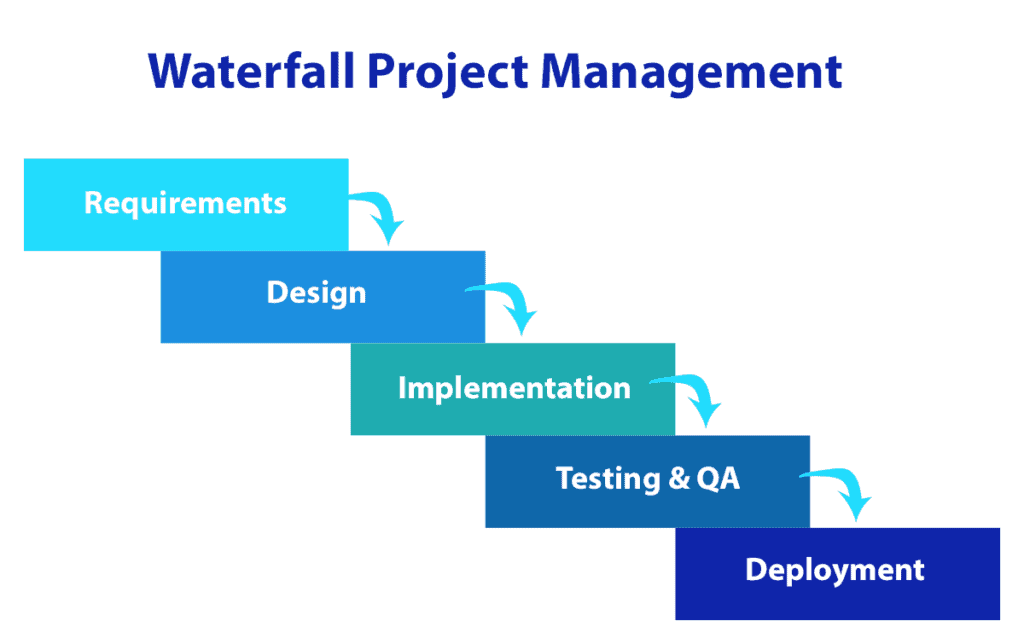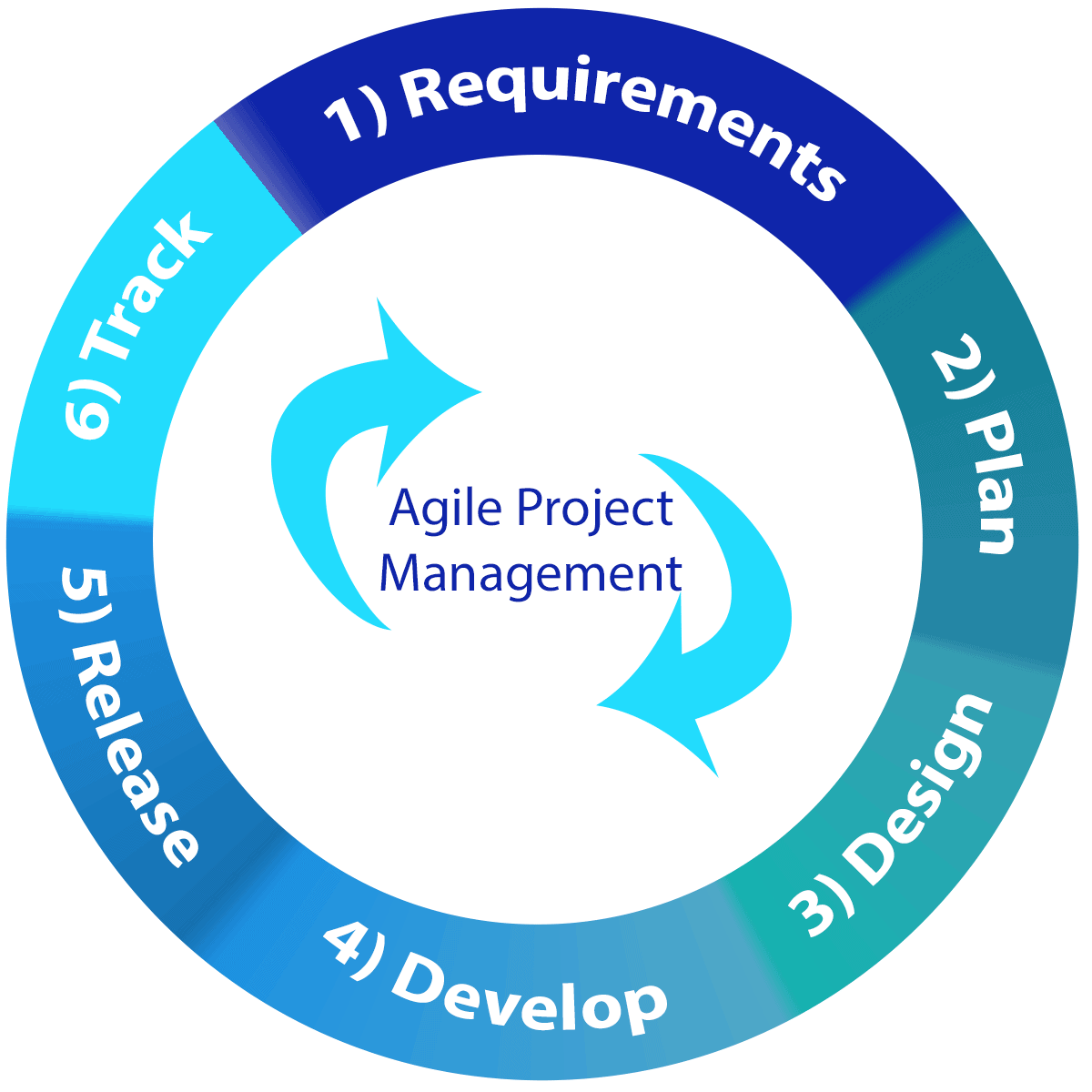How to effectively and efficiently manage website projects or product launches is one of the biggest challenges businesses owners face. A quick internet search leads to an overwhelming amount of choices. In the end, the two most commonly used methods are known as Waterfall and Agile. What makes these two project management techniques popular? Is one of them for you? We will break down the differences between these two project management techniques and help you decide which may be right for your business and website projects.

What is Waterfall Project Management?
Waterfall project management is one of the oldest methodologies of project management, having its beginnings in manufacturing and construction, but evolved to be used in software development, website development and others. The Waterfall method is based on a linear progression of the project – picture a “waterfall” – each phase of the project cascades into the next phase, flowing down like a waterfall.
Each phase of a project is scoped and fully completed before moving to the next phase. Waterfall relies heavily on detailed up-front planning, clearly estimating time and scheduling early-on during the project. Waterfall is a thorough method that is time-proven. It tends to work best for lengthy development projects for which there are few opportunities for changes. For instance, construction or manufacturing projects are very rigid which rely on completion of stages accurately.

Common five stages in the Waterfall model:
- Requirement research and development
- Design
- Implementation
- Testing and QA
- Deployment
The Pros and Cons of the Waterfall method:
Pros:
- Cost & timelines can be more accurately estimated
- Requirements fully understood and documentation available
- Expectations are clearly set
- Less changes mid-way through the project
- Less need for stakeholder or client/customer interaction through the process
Cons:
- Difficult to accommodate changes after Phase One
- Projects can take longer to launch
- Can feel too restrictive
- If there are heavily-involved stakeholders, there may be challenges with keeping to scope
What is Agile Project Management?
Agile Methodology is just what it sounds like: nimble, flexible and adaptable. Agile teams are able to make changes quickly and pivot to a new direction easily. Think of it this way: a car needs wheels and an engine to run, but it doesn’t need air conditioning to get it on the road. In this way, Agile methodology shows continuous progress and can be seen as providing faster and quicker results. You can launch iteration after iteration with continuous improvement and change.
Originally formed over two decades ago by the Agile Alliance; the Agile Alliance produced the “Agile Manifesto” with software development in mind. Agile planning focuses on continuous progression, building and learning and changing.

The Agile Alliance laid out these four key values:
- Individuals and interactions over processes and tools
- Working software over documentation
- Customer collaboration over contract negotiation
- Responding to change over following a plan
Broadly speaking, Agile sets out to harness change during the process to produce the most valuable deliverable. Although it was started with software development in mind, it easily translates to web design, marketing, copywriting or more. Agile management is not a “one size fits all” method and can be easily adapted to any project.
Key Components of Agile Project Method:
- Agile board
- Used for planning
- Used for planning
- Sprint planning
- Schedule of deliverables
- Schedule of deliverables
- User stories
- Identifying requirements
- Identifying requirements
- Daily stand-up meetings
- Continuous communication
- Continuous communication
- Review and retrospective
- Adapting and updating
The Pros and Cons of the Agile method:
Pros:
- Continuous delivery of value
- Faster ROI
- Able to make changes more rapidly
- Feels quicker and less restrictive
- Stakeholders, clients and customers involved throughout the process
Cons:
- Solid team built which has clear understanding of estimates and capabilities
- Potential for less-detailed documentation
- Teams can get sidetracked, and scope-creep is possible
- No finite end, long-term projects can suffer
Which Project Management Method is Right for Your Business?
Choosing between Agile or Waterfall can be confusing. How do you know which is going to work best? Which one fits your project best?
- Waterfall:
- Limited client/customer involvement
- Definitive deadline
- Scope is fixed
- No iteration involved
- Agile:
- More hands-on client/customer involvement
- Flexible feature launches
- Changes and features can be built-in after the base is launched
Still can’t decide? You can always look at doing a “Hybrid” option that merges the best of both worlds. The goal is to still define requirements at the beginning, but then move into a more agile approach when developing and testing.
Stand Out from the Competition with a Professional Website
Not interested in trying to decide which is the right way to go? Contact us at TheeDigital to help you launch your website or digital project. We will take care of the details for you and leave you to run your business. We are dedicated to providing our clients with professional websites that increase traffic, generate leads, and take your business to the next level, thus providing an unbeatable return on your investment. To learn more, reach out to us today at 919-341-8901 or fill out the form below to get started.
Tags: Miscellaneous



